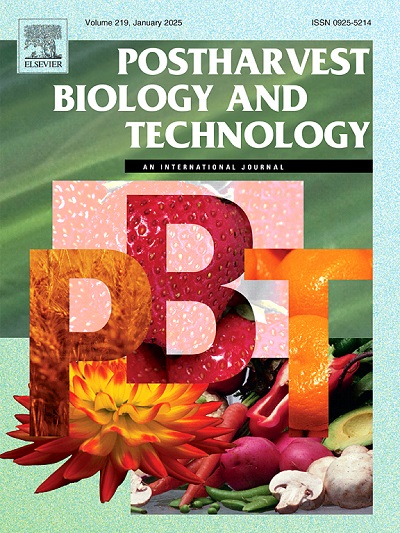Natamycin and potassium sorbate synergistically enhance resistance to Botrytis cinerea by activating the phenylpropanoid metabolism in harvested strawberry
IF 6.4
1区 农林科学
Q1 AGRONOMY
引用次数: 0
Abstract
Gray mold, caused by Botrytis cinerea, is a prominent postharvest disease that significantly diminishes the commercial value of strawberries. This study aimed to reveal the effects and potential mechanism of collaborative treatment with natamycin and potassium sorbate (SNPS) on enhancing gray mold resistance by regulating phenylpropanoid metabolism in strawberry fruit. All strawberries were first inoculated with a suspension of B. cinerea conidia, air dried and then the two experimental groups received injections of 10 μL SNPS (1 of minimal inhibitory concentration, MIC) and SNPS (3 of MIC) respectively, with distilled water as control. Strawberries treated with SNPS exhibited a significant reduction of 70 % and 50 % in disease incidence and lesion diameter after 3 days, respectively, compared to untreated samples. SNPS treatment also inhibited weight loss, and maintained high hardness and the contents of total soluble solids, anthocyanin and ascorbic acid. SNPS treatment activated Phenylalanine Ammonia-lyase, cinnamic acid-4-hydroxylase and 4-coumaric acid- CoA ligase, and also promoted the accumulation of total phenols, total flavonoids, and lignin. Moreover, strawberry fruit treated with SNPS inducer the accumulation of disease-course related proteins compared to the control. SNPS treatment effectively inhibit gray mold infection in strawberries by activating the phenylpropanoid metabolism pathways and disease process-related protein accumulation.
求助全文
约1分钟内获得全文
求助全文
来源期刊

Postharvest Biology and Technology
农林科学-农艺学
CiteScore
12.00
自引率
11.40%
发文量
309
审稿时长
38 days
期刊介绍:
The journal is devoted exclusively to the publication of original papers, review articles and frontiers articles on biological and technological postharvest research. This includes the areas of postharvest storage, treatments and underpinning mechanisms, quality evaluation, packaging, handling and distribution of fresh horticultural crops including fruit, vegetables, flowers and nuts, but excluding grains, seeds and forages.
Papers reporting novel insights from fundamental and interdisciplinary research will be particularly encouraged. These disciplines include systems biology, bioinformatics, entomology, plant physiology, plant pathology, (bio)chemistry, engineering, modelling, and technologies for nondestructive testing.
Manuscripts on fresh food crops that will be further processed after postharvest storage, or on food processes beyond refrigeration, packaging and minimal processing will not be considered.
 求助内容:
求助内容: 应助结果提醒方式:
应助结果提醒方式:


